HTML
-
Outbreaks of waterborne diseases associated with human fecal contaminated recreational waters have been a major public health concern worldwide(Xagoraraki et al., 2007; Sinclair et al., 2009). The United States Environmental Protection Agency(U.S. EPA)reported that approximately 3.5 million people are affected by waterborne diseases each year due to swimming in contaminated water(Dorfman et al., 2004). Worldwide, about 120 million gastrointestinal infections(GIs), 50 million acute respiratory infections and numerous skin infections are known to attribute to swimming or bathing in fecal contaminated waters each year(Shuval, 2003).
Current recreational water quality criteria rely entirely on the use of Fecal Indicator Bacteria(FIB)such as Escherichia coli and Enterococcus to estimate human disease risk to be associated with the use of recreational water. These criteria were established following epidemiologic studies of FIB concentration and gastrointestinal illness in single point source contaminated temperate beaches(Cabelli, 1983; United States Environmental Protection Agency, 2012). However, recent studies have shown that FIB concentrations do not always correlate with the risk of human diseases, including GI and respiratory illness, especially in areas of non-point source contamination(Calderon et al., 1991; Fleming et al., 2004; Colford et al., 2007; Boehm et al., 2009; Fleisher et al., 2010; Soller et al., 2010). Additionally, FIB can occur in the environment from sources other than human feces, and this can be problematic when trying to identify the relative contribution of human feces to FIB prevalence and human illness risk(Fujioka and Byappanahalli, 1996; Fujioka et al., 1998; Fujioka et al., 1988; Colford et al., 2007). Previous studies also showed that FIB concentrations often do not correlate with the presence of other potentially infectious agents, including enteric viruses(Gerba et al., 1979; Jiang and Chu, 2004).
Viral contamination outbreaks in recreational water have increased in the past several years(Sinclair et al., 2009). This may be partially due to the improvement of detection methods as well as the heightened surveillance by the Centers for Disease Control and Prevention(CDC). Studies on water-borne disease also illustrated that outbreaks of water-borne gastrointestinal disease linked to recreational water exposure increased consistently from 1989 to 2002, with a corresponding rise in viral gastroenteritis from 11% to 44%(Sinclair et al., 2009). These outbreaks are likely underestimates, as illness following recreational water contact often goes unreported due to the self-limiting nature of many common infections. It is also highly likely that a large proportion of viral outbreaks are unconfirmed etiologically. Thus the actual impact of human enteric viruses on public health due to recreational water exposure is likely even greater than expected. A review of several epidemiologic studies indicated that viruses were good predictors of GI in marine and fresh recreational waters(Wade et al., 2003).
Current studies have been shown that enteric viruses can persist as viable infectious agents for over 100 days in environmental waters and soils, and are known to be more resistant than bacteria to common modes of wastewater treatment processes(Gerba et al., 1975; Jiang and Chu, 2004; Fong and Lipp, 2005). Unlike bacteria, which can grow in the environment, viruses are obligate intracellular parasites, unable to propagate outside the cells of their host organisms(Lees, 2000). Additionally, viruses are shed at high levels from infected individuals, and a very small numbers of viral particles are sufficient to cause human disease in many cases(Fong and Lipp, 2005). Therefore the detection of human enteric viruses in recreational water directly indicates contamination from human fecal sources and the presence of potential health risk in a way FIB can not. Enteric viruses, therefore, are potential c and idates for future use as additional and /or alternative indicators of water quality.
Direct detection and use of enteric viruses as water quality indicators rather than FIB has been suggested in the past. However, viral presence often occurs at low levels in the environment and it requires that highly effective virus concentration and detection methods be established and utilized in order to directly detect human pathogens in environmental waters(Schwab et al., 1996; Ijzerman et al., 1997). Recently, highly effective laboratory methods have been developed for enhanced concentration and detection of enteric viruses and improved monitoring of human fecal contamination in environmental waters(Tong et al., 2011; Connell et al., 2012; Allmann et al., 2013). These methods, which are based on PCR amplification and detection, have shown to be highly specific and effective in detecting viruses from environmental waters, requiring as little as 0.1 viral cDNA for a positive detection(Tong et al., 2011; Connell et al., 2012). This study aims to further establish enteric viruses as potential water quality indicators through validating field application of these newly developed techniques by using enterovirus and noroviruses as a model to examine 1)the seasonal presence of human enteric viruses in Hawaiian recreational waters, 2)the correlation between FIB concentration and enteric virus presence, and 3)the recovery of infectious viruses from virus-positive samples for viral infectivity in vitro.
-
Eighteen sites were sampled at six different time points from December of 2011 to February of 2013. Three time points(August, October, and November 2012)corresponded to the dry season, and three time points(December 2011, April 2012, and February 2013)corresponded to the rainy/wet season in Hawaii. The 18 sites were selected and categorized as follows: 6 freshwater sites, 5 marine sites directly near freshwater output, 5 marine sites of high recreational(e.g., tourism)use, and 2 marine sites near wastewater treatment plant outfalls(Figure 1). Water samples were collected in the morning with sterilized 2-L polypropylene containers, transported on ice to the laboratory, and processed within five hours. A 1-L field blank of deionized water was run alongside samples to verify the absence of cross contamination of filter funnels or equipment. A positive control sample consisting of 50 mL raw sewage in 1 L of deionized water was also included to ensure successful water filtration, nucleic acid extraction, and followed RT-PCR detection.
-
Samples were concentrated using a previously described method(Katayama et al., 2002). Briefly, 5 mL of 5 mol/L MgCl2was added to each 1-L freshwater sample before filtering to enhance viral adsorption. Samples were concentrated using 0.45 μm type HA negatively charged filter membranes(EMD Millipore, Billerica, MA, USA)under vacuum filtration in a sterilized filter apparatus. Two liters were filtered for each marine sample and one liter was filtered for each freshwater sample, except when filters became clogged, in which case samples were allowed to run for a minimum of one hour, and the final volume filtered was recorded. Recovered filters were cut, and one quarter of the filter membrane was used for infectivity studies. Nucleic acids were extracted from the remaining three quarters of the filter membrane using the PowerWater® RNA Isolation Kit(MoBio Laboratories, Inc., Carlsbad, CA, USA)with manufacture's instruction with some modification for designed extraction of both DNA and RNA(Connell et al., 2012). A total volume of 62 μL of nucleic acids was extracted from each sample; 45 μL was treated with DNase-I for removal of DNA, which acts as an RT-PCR inhibitor. The remaining 17 μL was used to test for FIB as an internal control. Resulting samples were stored at -80 ℃ until further processing. RNA was subjected to RT-PCR using the DyNAmo cDNA synthesis kit(Thermo Fisher Scientific, Inc., Waltham, MA, USA). The following reverse transcription conditions were used: primer extension for 10 minutes at 25 ℃, cDNA synthesis at 37 ℃ for 25 minutes, and reaction termination at 85 ℃ for five minutes; cDNA samples were stored at 4 ℃.
-
PCR was conducted using protocols previously established and reported to test for enterovirus, norovirus genogroup Ⅰ, norovirus genogroup Ⅱ, male-specific FRNA coliphage, and E. coli using primer sets and reaction conditions specific to each group(Tong et al., 2011; Connell et al., 2012). Presence of E. coli was used as an additional internal control, to ensure successful nucleic acid extraction for all samples. Results were visualized using gel electrophoresis on a 2% agarose gel stained with ethidium bromide.
-
Selected samples were sequenced to verify detection of the correct virus. PCR amplicons were excised from the gel, and extracted using the OmegaBiotek Gel Extraction kit(Omega Biotek, Norcross, GA, USA). PCR products were then cloned into a vector using the TOPO TA Cloning kit(Life Technologies, Gr and Isl and, NY, USA), transformed into competent E. coli cells(New Engl and Biolabs, Ipswich, MA, USA), and grown on an lysogeny broth(LB)agar plate with ampicillin and Xgal to ensure selection of only colonies with the insert of interest. Two to three individual colonies were picked and grown in liquid LB media overnight. Plasmids were extracted using OmegaBiotek Plasmid Extraction Kit and sequenced at the College of Natural Sciences Advanced Studies in Genomics, Proteomics, and Bioinformatics(ASGPB)at the University of Hawai'i at Mānoa.
-
Statistical analysis was conducted using the data analysis expansion add-in in Microsoft Excel(Microsoft Office 2010). Differences in detection between the rainy and dry seasons were analyzed using the t-test; alpha was set to 0.05 in all cases. All p-values were given as two-tailed.
-
All samples testing positive for norovirus genogroup Ⅱ by PCR were subjected to further testing via qRT-PCR to determine the copy number of viruses present in the sample. Seventeen sites tested positive for norovirus genogroup Ⅱ using the optimized PCR methods described previously. In addition, during the sampling period for bacterial correlations, two samples tested positive for norovirus genogroup Ⅱ, making a total of 19 samples positive for norovirus genogroup Ⅱ. A st and ard curve was established using plasmids prepared from clinical samples of norovirus. Targeted amplicons were inserted into competent E. coli cells(New Engl and Biolabs, Ipswich, MA, USA) and grown on selective LB Agar plates overnight. Individual colonies were picked and grown in liquid LB medium for 12-16 hours. Plasmids were then extracted using the OmegaBiotek Plasmid Extraction kit. Plasmids were linearized with BamH I, in vitro transcription was performed using the MAXIscript kit, and RNA was purified using the MEGAclear kit(Life Technologies, Gr and Isl and, NY, USA). Concentrations were measured at least five times using a UV spectrophotometer and the average was taken to determine the starting concentration; six 10-fold dilutions were used to create st and ard curves. The same primers were used as described previously, and the Ring 2 probe was used for norovirus genogroup Ⅱ(Trujillo et al., 2006). Test samples were amplified using the BioRad iQ5 at the following settings: cDNA synthesis for 10 minutes at 50 ℃, inactivation of the reverse transcriptase for 5 minutes at 95 ℃, 40 cycles of PCR cycling and detection for 15 seconds at 95 ℃ followed by 30 seconds at 60 ℃.
-
PCR-positive samples for enteroviruses were processed for virus recovery and viral infectivity according to the method established previously(Wang et al., 2014). In brief, after passing the water sample through a negatively charged type HA membrane, the membrane was cut into two parts with sterile scissors. Three quarters of the membrane removed from the filtration unit was used for further nucleic acid extraction; one-quarter of the membrane was kept on the funnel and washed with 200 mL of 0.5 mmol/L H2SO4(pH 3.0)to remove cations, and then transferred to a 15 mL centrifuge tube containing 5 mL of 3% Beef Extract in 0.05 mol/L glycine(pH 9.5). To recover infectious viruses, the 15 mL centrifuge tube was then shaken on a vortex adapter combined with an analog vortex mixer(VWR, CAT No. 588160121, USA)at a speed of 6 for 30 minutes at 4 ℃. The eluent was then centrifuged at 3, 000 rpm for 5 minutes and the recovered supernatant was treated with antibiotic incubation medium(AIM)containing 2 mmol/L P/S/G, 25 μg/mL Amp B, and 500 μg/mL Gentamicin and 1x MEM at a ratio of 1:2 for 2-4 hours at 4 ℃ before it was applied in viral infectivity assay.
In this study, buffalo green monkey kidney(BGMK) and Vero cell lines were used in the TCID50 assay for detecting the presence of infectious enteroviruses. The cells were seeded into 96-well plates and grown with Minimum Essential Medium(MEM)(BGMK, Vero cell)to allow the formation of cell monolayers, which were then infected with 10-fold dilutions of samples(100 to 10-3). Affected cultures were examined daily for the appearance of any viral-induced cytopathic effect(CPE)for up to 14 days. A blank passage of the infected cultures was conducted when the initial infection was negative.
-
Six sample sites were chosen to further examine any possible correlation between current indicator bacteria and enteric virus presence. Three sites were chosen as low detection sites: Hale'iwa Ali'i Beach Park, Kailua Beach Park and the Ala Wai Canal, and the other three sites were chosen as high detection sites: S and Isl and, Ala Moana Beach Park, and Mānoa Stream. These six sites were tested twice, and samples were taken for both enteric virus detection and bacterial counts(Enterococci and Clostridium perfringens). Enteric virus samples were processed as described previously. Concentrations of Enterococci were determined using the U.S. EPA-approved Defined Substrate Technology® based Enterolert® kit(IDEXX Laboratories, Inc., Portl and, ME, USA). C. perfringens concentrations were determined by filtering 100 mL of water sample and incubating filters(Type GN-6, 0.45 μmol/L pore size; Pall Corporation, Ann Arbor, MI, USA)for 24 hours at 42 ℃ on mCP agar plate. Hawai'i State Department of Health single sample guidelines were used to determine threshold limits of bacteria; 35 most probable number(MPN)/100 mL Enterococci for both salt and fresh water, 5 CFU/100 mL and 50 CFU/100 mL of C. perfringens in salt and fresh water, respectively. A single viral detection of any of the four viruses tested was considered positive.
Sample collection
Sample processing, nucleic acid extraction, and RT-PCR
PCR identification
Sequencing
Statistical analysis
Real-time qPCR
Viral infectivity
Bacterial correlation
-
Overall, all 18 sample sites tested positive for enteric virus at least three times during the study period. There were 71 total viral detections during the rainy season, and 45 total detections during the dry season. Among these 18 sites, S and Isl and, a site directly next to a wastewater treatment plant and its outfall, tested positive most frequently during the study period, with a total detections of 10 times. Hale'iwa's Ali'i Beach Park on the North Shore tested positive for enteric viruses for only 3 times, representing the least number of viral detection during the study period(Table 1). Norovirus genogroup Ⅰ was detected the most often overall, followed by enteroviruses, which is fairly consistent with previous studies(Table 2)(Tong et al., 2011; Viau et al., 2011; Connell et al., 2012).

Table 1. Seasonal detection of enteric virus from selected environmental water sites around Oahu Island (by Month).

Table 2. Summary of detection of enteric viruses by types from the 18 selected recreational waters.
-
There was a significant difference in overall detection between the rainy and dry seasons, with 71 total viral detections in the rainy season and 45 in the dry season(P = 0.0052, Figure 2). Additionally, there was significantly more viral detection in the rainy season than the dry season based on water type defined as freshwater, recreational, near freshwater output, or near sewage treatment outfalls(P = 0.008, Figure 3). There were no statistically significant variations in detection based on virus type(P = 0.08). The majority of viruses detected did not show significant variation with season; however, norovirus genogroup Ⅱ showed an almost statistically significant variation between rainy and dry season, with more detections in the rainy season compared to the dry season(P = 0.053).

Figure 2. Total viral detections in the rainy season versus dry season. Presented as absolute number of detections of all viral types detected during rainy and dry season by site. * P = 0.005 for average total detections in rainy season as compared to dry season.
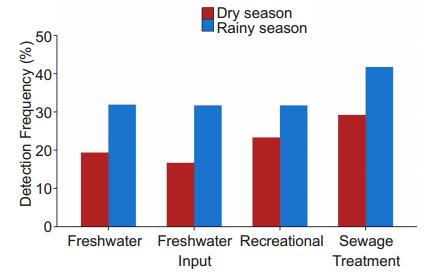
Figure 3. Percent of total possible detections in rainy season versus dry season, by water type. Percent of total possible detections calculated as total number of detections divided by number of site types and times number of possible viral types. * P = 0.008 for average total detections in rainy season compared to dry season, stratified by water type.
-
Selected positive samples were sequenced to confirm accurately viral detection. Several viral subtypes were found, and sequenced samples were positively identified as the virus of interest(Supplementary Table S1). In addition, a control test revealed that all the samples tested positive for E. coli, indicating successful extraction of sample nucleic acids.
-
Of the seventeen positive norovirus genogroup Ⅱ samples tested using qRT-PCR, four samples were positively quantified by qRT-PCR basing on the sensitivity limitation of the method. Copy numbers could only be detected down to approximately 200 copies per reaction, whereas the detection limit for PCR was likely 10-7, requiring only 0.1-10 pg of viral cDNA to obtain a positive detection(Figure 4, 5). All samples collected during the February 2013 sampling time were positively quantified and showed a range from a low of 229 copies per 25-μL reaction to a high of 12, 100 copies per 25-μL reaction, with a median of 1, 645 copies per 25-μL reaction.
-
A total of 31 samples that had tested PCR positive for enterovirus were subsequently tested for viral infectivity using BGMK and Vero cells. No cytopathic effects appeared in BGMK and Vero cells at any dilution for all these samples following the infection period, indicating viruses eluted from samples, though present, were non-infectious under the present test conditions.
-
Six sites were sampled at two different time points to analyze both FIB counts and viral presence. There was very limited apparent correlation between FIB levels and viral presence in this study. Among the six sites tested for a total of 12 samples, only two freshwater sites and one brackish water site tested above acceptable limits for Enterococci, and no sites tested above acceptable limits for C. perfringens; however, 10 out of 12 sites tested positive for one or more enteric viruses(Table 3).

Table 3. Correlation between bacterial counts and viral presence determined in six sampling sites.
Viral detection
Statistical Significance
Sequencing and internal control
qPCR analysis
Infectivity
Bacterial correlation
-
Despite the widespread use of FIB as a tool to monitor water quality presently, outbreaks of disease associated with recreational water exposure still occur worldwide, including the occurrence of water-borne illness reported from the waters meet the FIB st and ards(Bosch, 1998; Sinclair et al., 2009; Okoh et al., 2010). In order to secure public protection from diseases associated with fecally-contaminated recreational waters, effective systems for enhanced monitoring water quality are crucially important and necessary(United States Environmental Protection Agency, 2012). To address this need, this study was conducted to test and development of using human enteric viruses as an additional or alternative indicator to the FIB for effective monitoring of recreational water quality.
In recent years, several epidemiologic studies have failed to show statistical correlations between currently used FIB and human GI or respiratory illness from recreational water, particularly in tropical waters and waters contaminated by non-point sources(Fleming et al., 2004; Fleisher et al., 2010; Sinigalliano et al., 2010). In addition, previous studies showed the lack of correlation between bacterial concentrations and virus presence(Gerba et al., 1979; Jiang and Chu, 2004; Pusch et al., 2005). The findings from this study also corroborates this lack of correlation, and showed that viruses were detected at many sample sites where bacterial levels fell well below accepted st and ards for use. Only 25% of samples had both high Enterococci levels and detectable virus presence, while 58% had virus presence and no elevated Enterococci. No samples yielded high C. perfringens levels, one of the major criteria currently used in Hawai'i for water quality monitoring. Viruses are known to be associated with many outbreaks of water-borne illnesses; norovirus alone was the confirmed etiologic agent in 20% of all outbreaks of acute GI associated with untreated water from 2007-2008(Hlavsa and Brunkard, 2011). Additionally, 37%-73% of outbreaks are unconfirmed etiologically, and it is likely that a large number of these cases are due to viral agents(Craun et al., 2005; Craun et al., 2006). It is therefore of utmost importance that water quality indicators should adequately reflect the presence of potentially infectious viruses. The results presented in this study alert a currently potential risk for public health if FIB were used alone for Hawaii water monitoring. Fecal indicator bacteria are assumed to correlate with human disease risk but they are not accurately predicting risk of viral disease. This inadequate presentation of FIB in areas of viral presence could explain so me incidence of disease outbreaks associated with the use of recreational water that met the FIB criteria, such as the waters tested in this study(Bosch, 1998; Sinclair et al., 2009; Okoh et al., 2010).
Several studies have shown that both Enterococci and E. coli are found naturally in soils in tropical climates and are able to replicate in tropical soil environments such as Hawaii(Lopez-Torres et al., 1987; Fujioka et al., 1988; Fujioka and Byappanahalli, 1996; Fujioka et al., 1998). For this reason, C. perfringens is used in Hawai'i as a secondary indicator of water quality, and was therefore included in this study(The Hawaii Department of Health, 2012). However, to date there have been very few statistically significant epidemiological links found between C. perfringens concentrations and adverse human health outcomes(Wade et al., 2003; Wade et al., 2010). A study by Viau et al. found significant links between Salmonella, Campylobacter, and two different Vibrio species with C. perfringens(Viau et al., 2011). However, our study revealed there was no correlation between C. perfringens concentration and viral presence. And to the best of our knowledge, such correlation has not yet been established. In tropical environments in particular, viruses could make for excellent additional indicators as they are free of replication in the environmental water unlike their bacterial counterparts, but are likely to persist longer and be more resistant to wastewater treatment(Lees, 2000; Fong and Lipp, 2005).
Previous studies of waterborne diseases have shown the important role played by increased l and -based runoff into temperate and subtropical oceans and streams(Dwight et al., 2004; Jiang and Chu, 2004). This may suggest a similar pattern would occur in tropical waters: an increase in rainfall and runoff could lead to an increase the presence of enteric viral pathogens in recreational waters. Water samples taken during the rainy season exhibited significantly higher rates of viral pathogens than those taken during the dry season. Though individual viruses did not show significant seasonal variation, this is likely due to small sample size, as norovirus genogroup Ⅱ showed a nearly significant difference. Norovirus genogroup Ⅱ was shown, in at least some samples, to be present at a concentration great enough to cause disease in humans if infectious, based on an average accidental intake of 16 mL of seawater during recreational swimming(Dufour et al., 2006). Although viral infectivity experiments were negative under the test conditions in this study, infectious enteroviruses were detected in environmental waters(Pusch et al., 2005). The negative detection of infectious viruses in this study may reflect the nature of the absence of infectious viral particles in these PCR-positive samples, possibly due to a long period of degradation in the environment. However, the negative viral detection may also be possibly due to the limitation of viral concentration and recovery processes that are not highly sensitive and effective enough, which suggests the need for improved the laboratory techniques and test conditions in future. Nevertheless, frequent detection of enteric viruses in O'ahu's coastal waters emphasizes the possibility of using the established methods for monitoring and detecting enteric viruses as an alternative indicator of water quality, the need for regular monitoring of these coastal waters for the presence of water-borne pathogens, and the essentiality to search for the contamination so urces in order to prevent further contamination and improve protection of recreational water users.
In 2012, the EPA announced its new criteria for recreational waters(EPA, 2012). These new criteria remain nearly identical to the 1986 criteria except the new criteria allow for monitoring to be done using either traditional culture-based methods, or newer, rapid methods, including molecular detection techniques such as qPCR. In addition, the new criteria urge for continued research into water quality criteria and the establishment of site-specific criteria. It is clear that FIB alone are not indicative of all potential disease-causing organisms present in recreational waters, and that additional indicators must be utilized in the future to create a more comprehensive spectrum of the risks associated with recreational water use. Our present study demonstrated the feasibility of the detection of human enteric viruses in environmental waters using the established laboratory methods(Tong et al., 2011; Tong and Lu, 2011; Connell et al., 2012; Allmann et al., 2013) and the techniques utilized in this study have been tested in recreational waters in both Hawai'i and China with success, suggesting the notion of using human enteric viruses as an alternative indicator for enhanced monitoring of recreational water quality and better protection to public health. Additionally, this study has corroborated past evidence, suggesting that FIB levels do not correlate with the presence of enteric viruses in the environment. This study also indicates the potential for enteric viruses as additional indicators of water quality, especially in tropical environments where relying solely on FIB is likely inadequate. Future studies are needed to streamline the process and develop techniques to both quantify and determine the infectivity of these enteric viruses.
-
This work was supported in part by grants from the Centers for Oceans and Human Health(COHH)program, the National Institutes of Environmental Health Sciences(P50ES012740), the National Science Foundation(OCE04-32479 and OCE09-11000), and the Hawai'i Community Foundation(11ADVC-49702).
-
The authors declare no competing financial interests. This article does not contain any studies with human or animal subjects performed by any of the authors.
-
YL and EAU designed the experiments and data analysis; EA performed all experimental tests and wrote the manuscript; ZW and SS performed viral infectivity tests, CC provided technical assistance in water sample collection and experimental tests; MK and MW bacterial correction tests; YL revised the manuscript. All authors read and approved the final manuscript.
Supplementary Table S1 is available on the website of Virologica Sinica: www.virosin.org; link.springer.com/journal/12250.
-

Table S3. Sequencing results of randomly selected amplicons detected during the seasonal study.







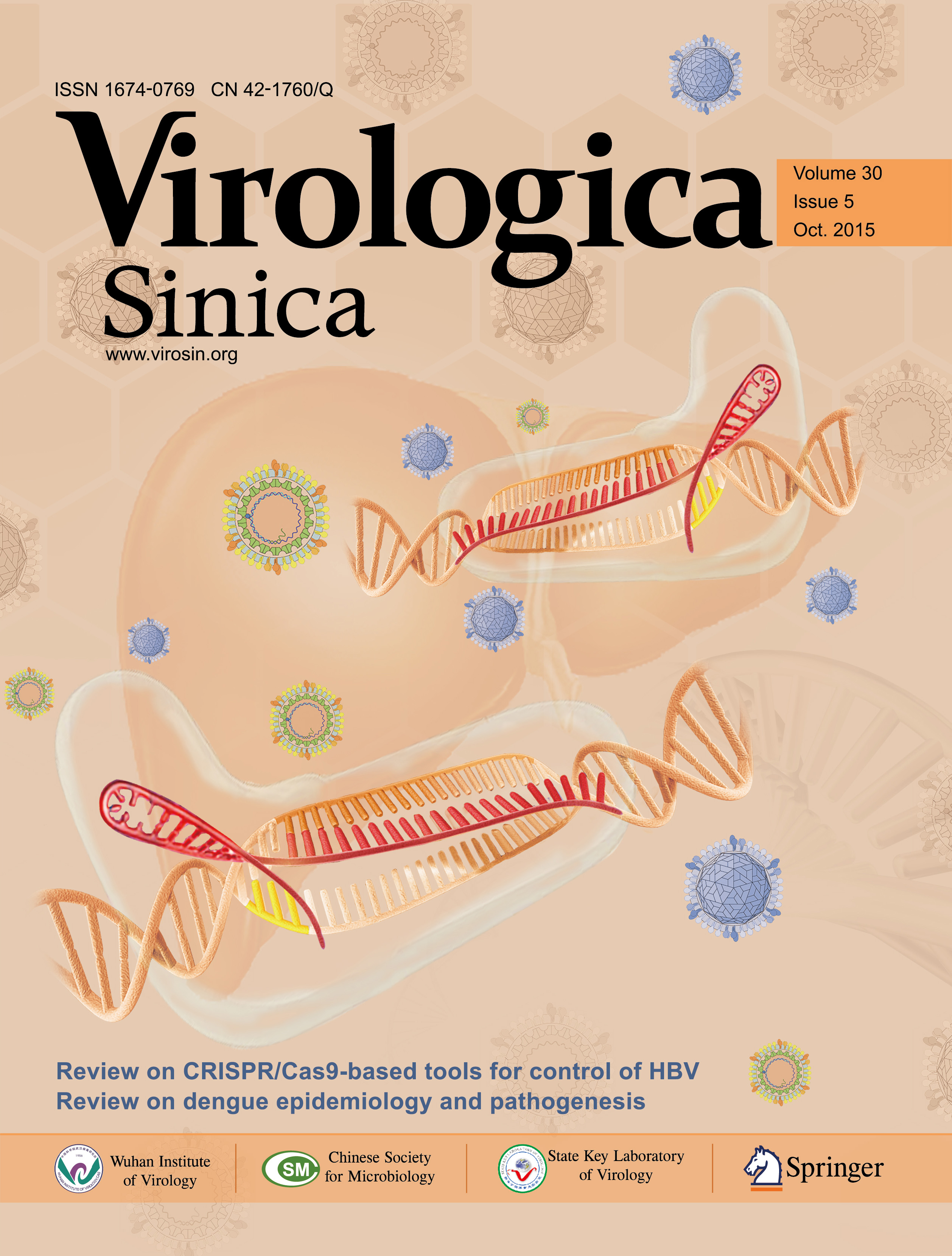





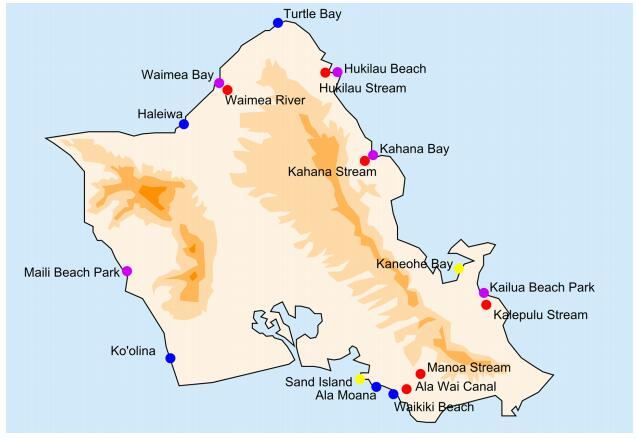


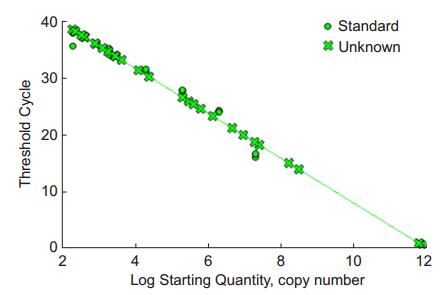
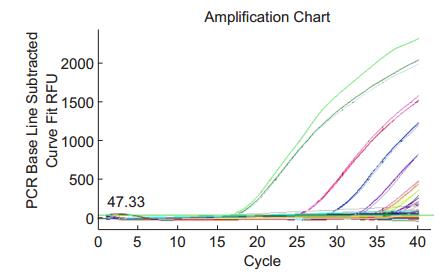

 DownLoad:
DownLoad: